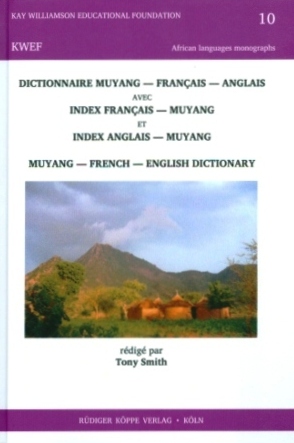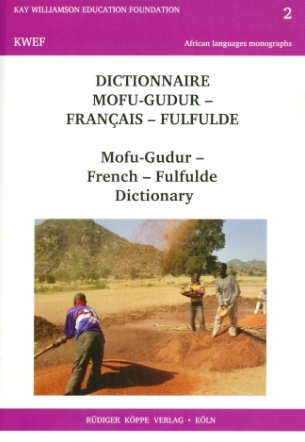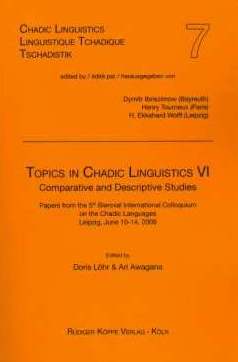




The Muyang language is originally spoken in the department Mayo-Sava of the Extreme North Region in Cameroon. According to the Atlas Linguistique du Cameroun, it is classified as a member of the Wandala-Mafa group of languages, which in turn belongs to the Chadic language phylum, whereas it is attributed to the Biu-Mandara group of the same phylum by the Ethnologue, which estimates the number of Muyang speakers at approximately 30,000. For the most part, the Muyang are cultivators and still inhabit their territory of origin, albeit there is an important diaspora located in the North Region of Cameroon as well.
The present dictionary comprises approximately 5,500 Muyang terms with French and English definitions. These are supplemented with numerous examples of usage and photographic illustrations. In order to facilitate the search of keywords, the dictionary also contains three indices of French glosses, of English glosses as well as of scientific terms. The introductory part offers summaries of the phonology and grammar of the language. In addition, a guide to the orthography of Muyang as well a list of proper names is provided in the annex.
Owing to the linguistic material and the examples of usage, this dictionary is of interest not only for speakers of Muyang, who wish to write and preserve their mother language and their cultural heritage, but equally for Africanists and linguists in general.
DESCRIPTION EN FRANçAIS
Le muyang est une langue parlée d’origine dans le département du Mayo-Sava, dans la Région de l’Extrême-Nord du Cameroun. Dans l’Atlas Linguistique du Cameroun elle est classifiée membre du groupe wandala-mafa de la famille de langues tchadiques, tandis que l’Ethnologue l’attribue au groupe Biu-Mandara de la même famille. Selon l’Ethnologue la population des locuteurs de la langue monte à 30.000 ; pour la plupart ils restent cultivateurs dans ou à côté de leur territoire d’origine, bien qu’il existe une diaspora importante dans la Région du Nord.
Ce dictionnaire comporte à-peu-près 5.500 termes muyang, avec définitions en français et en anglais. Les définitions sont élargies par de nombreux exemples d’usage, plus plusieurs illustrations photographiques. Pour aider le lecteur à trouver ce qu’il cherche, s’ajoutent aussi trois index : de gloses françaises, de gloses anglaises, et de termes scientifiques. En introduction sont offerts un résumé phonologique et un résumé grammatical, et en annexe un guide à l’orthographe de la langue et une liste de noms propres.
Grâce au matériel linguistique et aux exemples d’usage ce dictionnaire intéresse les linguistes et les spécialistes des langues africaines, tandis que les locuteurs Muyang qui veulent écrire et préserver leur langue maternelle et leur héritage culturel en bénéficieront aussi.
Under these links you will find further descriptions and classification of languages and cultures of the Central Chadic / Biu-Mandara subgroup:
© 2026 by Rüdiger Köppe Verlag – www.koeppe.de